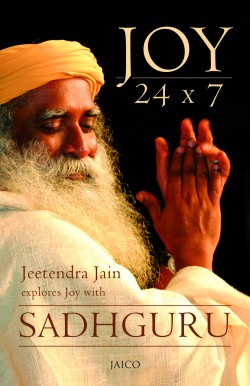
World Laughter Day is an annual event first celebrated on January 10th, 1998. It was created as a way to raise awareness about laughter and its many healing benefits. Thousands of community groups around the world have gathered to commemorate World Laughter Day by staging comedy events. Thousands of people have gathered worldwide on that day to laugh together. Since 1998 it has spread all over the world as a way to celebrate people’s love for comedy and laughter.
When a room is filled with somberness, telling a joke and the consequential laughter can shift the mood. Laughter often feels good and has been known to help heal and dissolve hardships. But is it effective only if we laugh all the time? Is that what being joyful means?
Laughter is known as the best medicine, but it can also turn into a bondage. Sadhguru explains why you should work on the source of your laughter.
Sadhguru: People have been saying for a very long time that laughter is the best medicine. Somewhere somebody understood that joyous people naturally heal themselves. Whether you are well or ill is simply a question of how efficiently your body is functioning. If it is functioning well, we call it health. If it is not, we call it ill. When you are joyful your physical body functions at its best. So then for it to become well will be natural. It is not the laughter which heals you; it is the joy that heals you, but laughter has become so connected with joy.
Laughter can also be a bondage. If you believe that joy means you must be always “hahaha” then you’re going to be very ridiculous, because in all kinds of situations you’ll do “hahaha” without realizing the depth and dimension of the situation. Joy does not mean laughter. Joy can find expression in every possible way – it need not be any particular way. Laughter may be one expression, silence can be another expression. Joy may bring stillness to you, action to you, or it can bring tears to you.
Though Gautama the Buddha was the very embodiment of joy, never did anybody find him laughing at any time. Never did Gautama laugh loudly, nor even smile blatantly; even his smile was just a small thing. Joy need not mean smiles or laughter. Joy means you are at the core of life. The moment you enslave this to one particular expression, you have made sure your joy cannot be 24 x 7.
What Joy Means
Joy means fundamentally you are deep rooted in life, not on the surface. You are at the source, that’s why you are joy. People are always trying to approach it the other way. Somebody thinks joy is drinking alcohol, somebody else thinks joy is laughing. You know, they have created a society of laughing people. Everywhere on the street they will be like “hahaha, hoohoohoo, hehehe!” Initially it will be fun, but if you have to live with someone who’s laughing all the time, one day you will want to kill him just to stop the laughter!
Laughter is a Consequence
These days a pathetic kind of “yoga” is going on called laughing yoga. Both of us stand in front of each other and you say, “hehehe,” I say “hehehe.” This is crazy. Recently I was reading some American to-do teacher was advising that ten minutes a day you must laugh… You will be in the psychiatry department soon!
See, if you want flowers in the garden, you don’t buy plastic flowers and fix them there. You have to do something which doesn’t look like flowers – you have to handle the soil, the manure, water, sunlight. None of these look, feel or smell like flowers, but if you handle these things right, flowers will come. So laughter will come not because you have taken a stand, “Every day, I must laugh.” If you are in a certain state of pleasantness within you, without knowing why, a smile will spread on your face. With a very little tickle, you will laugh. Laughter is a consequence. Don’t try to create the consequence. Work on the process, the source.
Joy is not something that you have to do. If you do not disturb the basic process of life within you, joy is a natural outcome. Joy is not an achievement, joy is your original state. In yoga, we are looking at a human being as a strata of five bodies: Annamaya kosha, Pranamaya kosha, Manomaya kosha, Vignanamaya kosha and Anandamaya kosha. The word “ananda” can be interpreted as joy. So the deepest core of you is joy. If the first three dimensions of the body – the physical, mental and energy body – are in proper alignment, the innermost core which is absolute joyfulness will naturally find expression.
Editor’s Note: The New York Times Bestseller book, “Inner Engineering: A Yogi’s Guide to Joy,” by Sadhguru is a guide to self-empowerment that relies on the teaching and principles of classical yoga to help readers create an enduring foundation for inner stability and peace.




